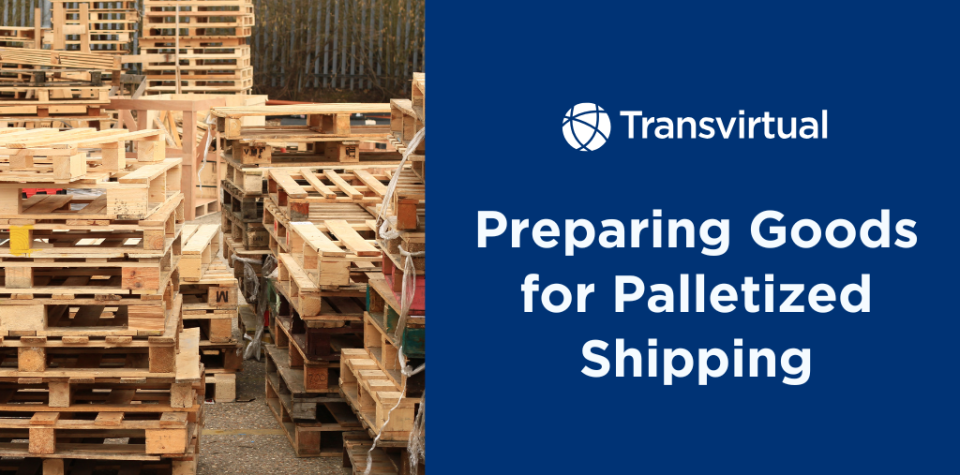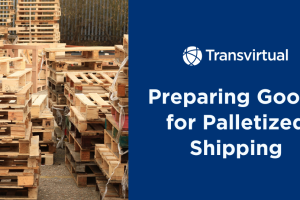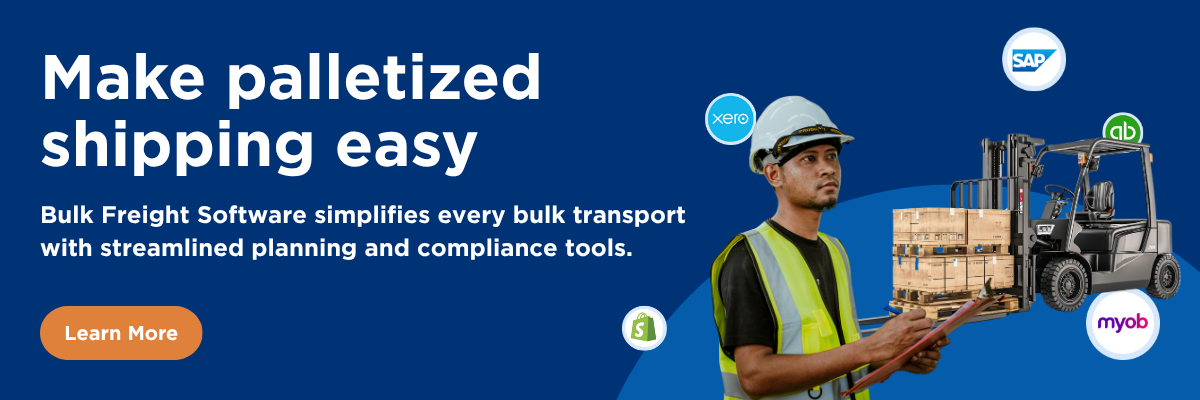Table of Contents
When it comes to shipping freight, preparation is everything. The way you pack, stack boxes, and properly secure your goods determines whether your pallet shipment arrives safely, on time, and within cost expectations.
Pallet shipping is one of the most reliable ways to move goods efficiently, especially when handling bulk orders or heavy cargo. But to make the most of it, you need to understand how pallets work, how to prepare them, and how to keep your freight safe during transit.
This guide walks you through what pallet shipping is, how it works, and how to prepare your goods for smooth, secure, and cheaper delivery.
What Is Pallet Shipping?
In simple terms, pallet shipping is the process of stacking and securing goods on a pallet, a flat platform designed to hold boxes, crates, or other packages during loading, transport, and unloading.
A pallet acts as a sturdy base, allowing carriers to handle shipments with a forklift or pallet jack instead of moving items one by one. This makes the entire logistics process faster and safer.
Pallet shipping is one of the most reliable ways to move goods efficiently, especially when handling bulk orders or heavy cargo. But to make the most of it, you need to understand how pallets work, how to prepare them, and how to keep your freight safe during transit.
How Does Pallet Shipping Work?
At its core, pallet shipping is about structure and coordination. Each step from packing to delivery is designed to keep freight stable and trackable throughout its journey.
Every pallet shipment follows a simple but critical process to ensure smooth transport and delivery.
Packing and stacking: Goods are packed into cardboard boxes or containers and stacked on a sturdy pallet.
Wrapping and labelling: The load is covered in shrink wrap and secured with straps to prevent shifting. A label is added to show destination and handling details.
Pickup and loading: The carrier collects the shipment and loads it into a truckload or container for transport.
Tracking and delivery: You can track shipments in real time through your freight management system.
Unloading and inspection: Once delivered, the palletized loads are checked before reaching customers or storage facilities.
Ways to Prepare Your Freight for Pallet Shipping
Getting your goods ready for pallet shipping takes careful planning. Here’s how to do it step by step.
Choose the Right Pallet
Selecting the right pallet is the foundation of a successful shipment. Check that it’s a durable pallet with no cracks or loose deck boards. Ensure it meets standard sizes and matches your load weight.
Choosing the right material is also important. You can use plastic for clean environments, wood for general use, or metal for heavy-duty applications. The construction should provide a sturdy base that can handle your goods during loading and unloading.
Deciding on the right type helps prevent collapses and ensures smooth handling throughout transit.
Stack Items Securely
How you stack your boxes affects everything, from load balance to safety. Always place heavier boxes at the bottom to create a sturdy base, then add lighter ones on top to prevent crushing. Make sure each box is aligned edge-to-edge in a tight, consistent pattern to distribute weight evenly across the pallet.
Avoid “pyramid stacking,” which makes the load unstable and difficult to transport. The top should always be flat so other pallets can be safely stacked above if needed. Think of your pallet like a brick wall which is even, solid, and built for stability during transit.
Use Quality Packaging
Your packaging is the first line of defense when shipping freight, so make sure it’s up to the task. Use sturdy cardboard boxes that can handle stacking pressure and stay in shape throughout loading, transport, and unloading.
Seal all seams with high-quality packing tape to prevent boxes from opening mid-journey. For fragile items, add internal cushioning like bubble wrap, packing paper, or foam to absorb movement and protect against impact. When done properly, good packaging keeps your goods secure and helps the pallet maintain its shape through every stage of shipping.
Shrink Wrap and Strap
Once your items are stacked, it’s time to lock them in place. Wrap the entire pallet with shrink wrap, starting from the base and working upward in overlapping layers. Make several tight passes to ensure full coverage and to keep the boxes from shifting.
For added support, especially with tall or heavy stacks, add plastic or metal straps around the load. These straps help keep your cargo stable, reducing movement and protecting against tear or collapse. A properly wrapped and strapped pallet stays secure, clean, and protected from dust or moisture during transit.
Label Clearly
Clear labelling is essential to ensure your goods reach the right place on time. Always include the correct address, carrier information, and any special handling instructions directly on the pallet. If your freight management system supports it, add barcodes or QR codes to make tracking easier and more accurate.
For delicate goods, mark your shipment with clear labels such as “Fragile” or “This Side Up” so handlers know how to manage the load. Place all labels where they’re easily visible and accessible to scanners during pickup, loading, and unloading. Proper labelling helps your shipment move smoothly through every step of the logistics chain.
Check Weight Limits
Overloading your pallet can cause serious issues, including pallet breakage, carrier rejections, and extra fees. Before shipping, always confirm your pallet’s weight capacity, which for wood pallets is typically between 1,000 and 1,500 kg. Stay within your carrier’s size and weight restrictions to avoid additional handling costs or delays.
Be sure to distribute weight evenly across the pallet to maintain balance and prevent tipping or sagging during loading and transport. A quick weight check before pickup can prevent costly damage later and keep your shipment safe and compliant from start to finish.
Ship Palletized Freight the Right Way
Preparing your goods for pallet shipping isn’t just about stacking boxes. It’s about protecting your products, your budget, and your reputation. When you palletize properly, you reduce the risk of damage and claims, speed up handling and delivery times, and cut down on unnecessary costs and delays.
If your business regularly ships palletized freight, managing it all manually can be challenging, from tracking loads to coordinating carriers. That’s where Transvirtual’s Palletized Freight Software comes in.
It helps you manage bulk shipments efficiently, track every pallet in real time, automate paperwork and proof of delivery, and ensure compliance with carrier standards.
Frequently asked questions
Why are pallets used for shipping?
Using pallets provides better stability, protection, and handling efficiency. With palletized loads, your goods stay organized and are easier to move in bulk. It’s a critical part of modern freight and storage operations.
What are the different types of pallets?
There are different pallet materials and configurations, depending on what you’re shipping:
Wood pallets: Common and cheaper, ideal for general freight.
Plastic pallets: Lightweight, reusable, and resistant to moisture, which is great for food, pharmaceutical, or export shipments.
Metal pallets: Offer more strength and durability for heavy loads or long-term storage.
Some traditional pallets use deck boards, while others have a solid deck for added support. The best choice depends on your business, product type, and carrier requirements.
What are the benefits of pallet shipping?
Here are some of the reasons why pallet shipping works:
Easier handling: Move large loads quickly with a forklift or pallet jack.
Reduced damage risk: Durable pallets and proper packing protect against tears, bumps, and moisture.
Better organization: Grouping packages on one pallet simplifies loading, unloading, and inventory tracking.



